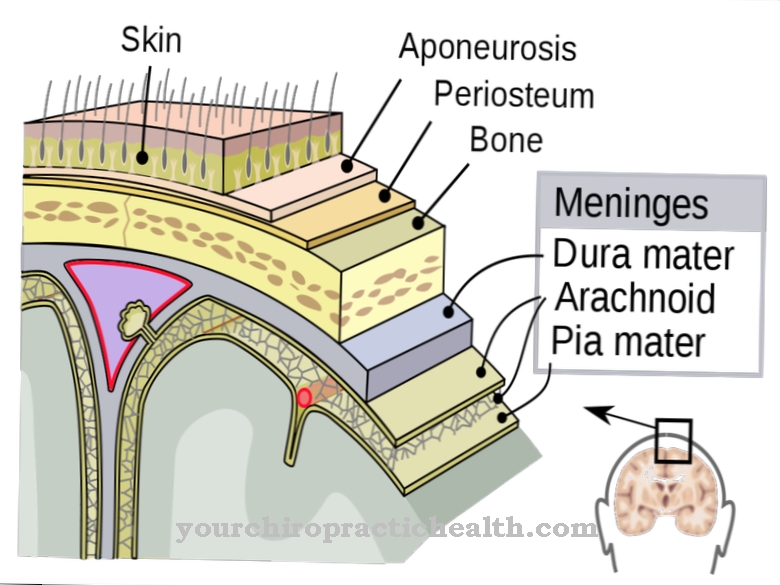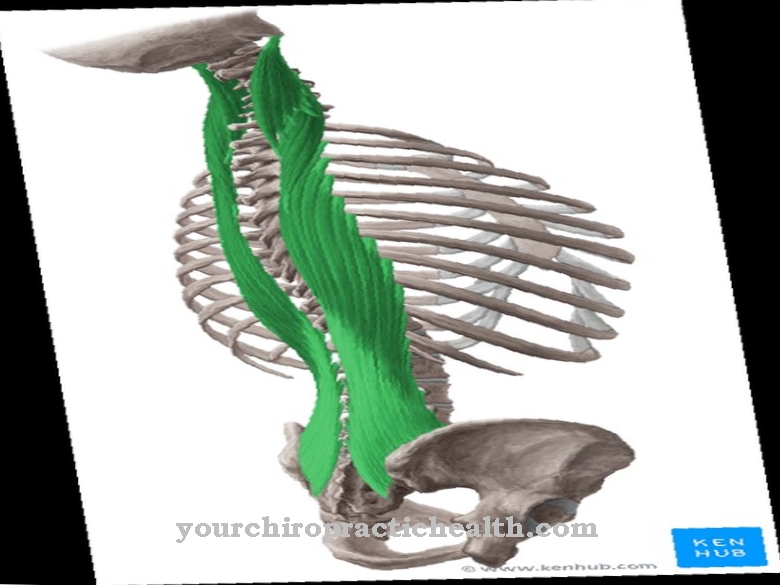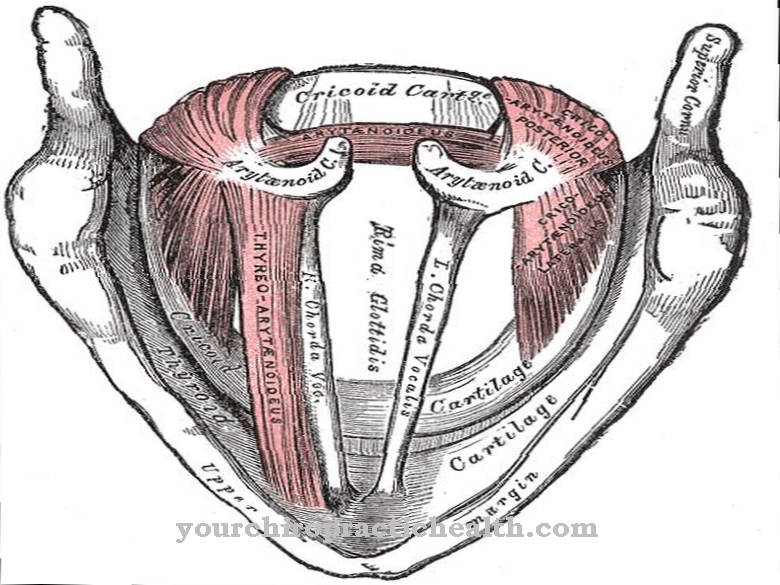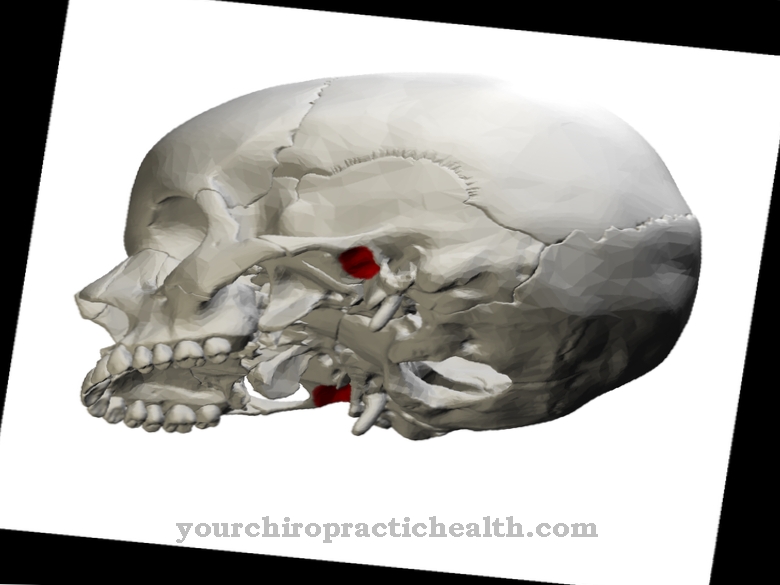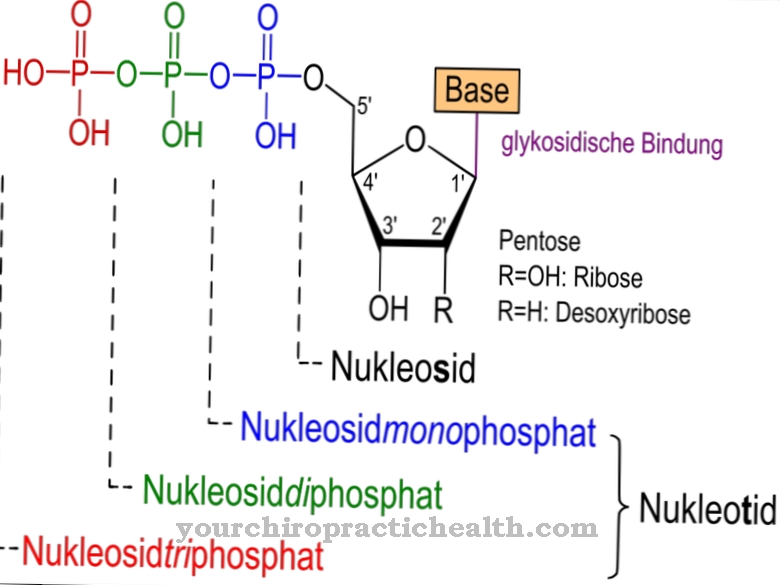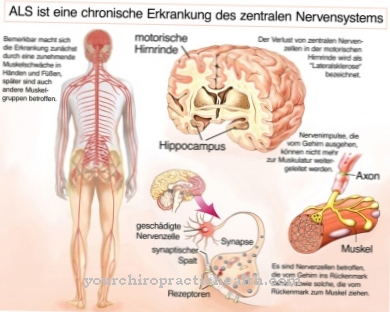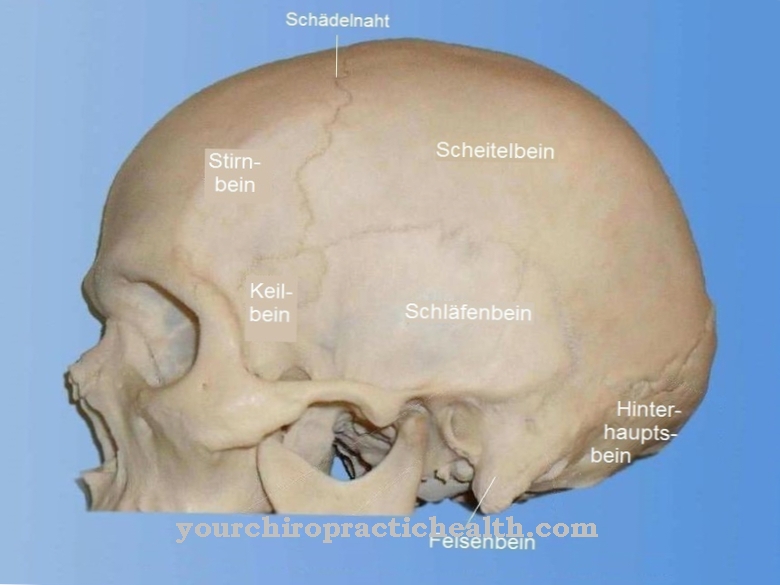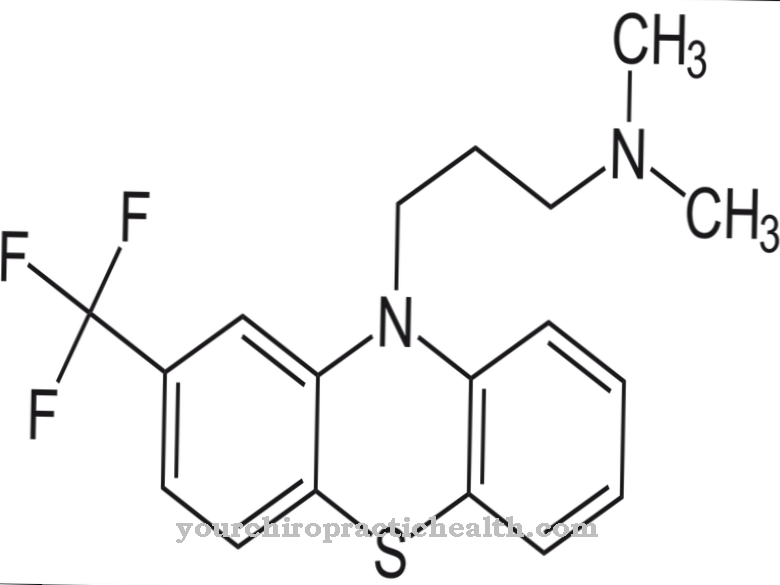The Ciliary ganglion is located on the optic nerve on the back of the eyeball. Parasympathetic fibers innervate the ciliary muscle, the pupil-constricting muscle sphincter pupillae and the inner eye muscles. Lesions in the ciliary ganglion can lead to the failure of the eyelid closing reflex; Ganglion blockers have a non-specific effect against overexcitation in the ganglia, but today they are used less often than drugs.
What is the ciliary ganglion?
The ciliary ganglion is an anatomical structure that lies on the optic nerve and therefore behind the eye. The ciliary ganglion innervates various muscles of the visual organ with its 2500 cells and represents the link to other ganglia.
Neurons that immediately follow a ganglion are called postganglionic nerve cells. In the peripheral nervous system, ganglia form punctiform nodes, which are characterized by a particularly high density of nerve cell bodies. They are considered to be the evolutionary precursors of the central nervous system in general and in particular as the precursors of the basal ganglia (nuclei basales), which are the core structures in the brain. The ganglion ciliare owes its name to the Latin word for "eyelash" (cilium), which refers to its spatial as well as functional relationship to the eye.
Anatomy & structure
The ciliary ganglion has different fibers, each with its own function; however, they are not all linked and they belong to different cranial nerves. The parasympathetic fibers of the nerve cell body cluster, which belong to the third cranial nerve (oculomotor nerve), are important for the eyes.
Medicine counts the ciliary ganglion among the parasympathetic ganglia, since these parts make the main contribution to the anatomical structure and, in contrast to other fibers, are switched here.
In addition, the nerve node includes sympathetic and sensitive fibers; however, they have no functional impact on the ciliary ganglion, but only traverse the core area. Only in the superior cervical ganglion do synapses transmit the signals from the sympathetic fibers to the following neurons. Sensitive fibers, which also run through the ciliary ganglion, connect the brain with the conjunctiva and cornea. These pathways belong to the nasociliary nerve. The total diameter of the ciliary ganglion is 1–2 mm.
Function & tasks
For the parasympathetic and sensory fibers, the ciliary ganglion only represents a passage; their nerve signals remain unchanged in the ciliary ganglion; its actual functions depend on the parasympathetic fibers. Part of this is important for the ciliary muscle (Musculus ciliaris), which attaches on the one hand to the Bruch's membrane (Lamina basalis choroideae).
The Bruch's membrane lies between the pigment layer and the choroid and not only separates the two layers from each other, but also supports the optimal distribution of water and nutrients. On the other hand, the ciliary muscle is attached to the dermis of the eye (sclera) and Descemet's membrane. Descemet's membrane or lamina limitans posterior is a layer in the cornea that has three levels. Zonular fibers connect the ciliary muscle with the lens and can bulge it more or less. This mechanism, which is also known as accommodation, is used by the eye to be able to see objects clearly at different distances. Accommodation disorders can therefore lead to nearsightedness or farsightedness.
The nerve tracts that supply the sphincter pupillae muscle also run through the ciliary ganglion. They belong to the oculomotor nerve. The muscle is responsible for the constriction of the pupils (miosis) and in this way regulates how much light falls into the eye. The accessory oculomotor nucleus (also called Edinger-Westphal nucleus) in the midbrain triggers the signal for muscle contraction.
You can find your medication here
➔ Medicines for eye infectionsDiseases
Lesions in the ciliary ganglion can lead to the blinking reflex not occurring. Certain chemical substances can affect the ganglia in general and thus also the ciliary ganglion. Medicine calls them ganglioplegics or ganglion blockers, but because of their unspecific effect and the resulting side effects, they are rarely used as medication.
The mechanism of action of all ganglion blockers is based on the fact that molecules inhibit or completely prevent the activity of neurons. As a result, they can no longer trigger electrical signals or relay information from other nerve cells. One of the ganglion blockers is the active ingredient hydroxyzine, which can be used in extreme allergic reactions; In particular, neurodermatitis and severe hives (urticaria) are indications for hydroxyzine. In addition, the substance has a potential against overexcitation, sleep disorders, anxiety and tension. Hydroxyzine is not approved for use in obsessive-compulsive disorder, psychosis and thought disorders, but it may also alleviate these.
A particularly strong ganglion blocker is tetraethylammonium ions, which are neurotoxins because of their strong effects. Tetraethylammonium ions prevent potassium ions from flowing through cell membrane channels and thereby repolarizing the nerve cell. Amobarbital is also a ganglion blocker and belongs to the barbiturates. The active ingredient is rarely used today and has hardly been on the market since the benzodiazepines replaced it as an important sedative and sleeping aid. Carbromal is similar, which has the same effect on the human body.
The situation is different with phenobarbital, which can still be used today in the treatment of epilepsy and was previously widely used as a sleep aid. The drug can cause side effects such as tiredness, drowsiness, headache, dizziness, coordination problems and ataxia, as well as psychological and functional sexual side effects. Because of these side effects and because phenobarbital reduces reaction time, patients should not operate machines, drive a car, or perform any other sensitive tasks after ingestion. Phenobarbital also plays a role in preparation for anesthesia, where such effects are desirable.

